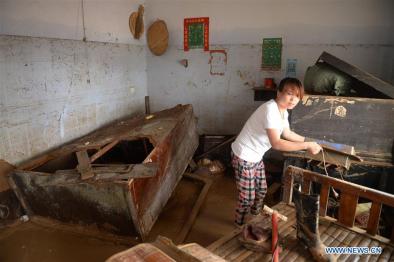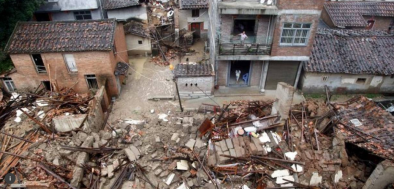Science Source
Linkage Between Hourly Precipitation Events and Atmospheric Temperature Changes over China during the Warm Season
- States measurement of precipitation on a finer temporal scale, for example, hourly rainfall, better reflects the essential physical characteristics of precipitation and hence is important in many fields
- States changes in the characteristics of short-term precipitation events are of interest because of the potential hydrologic impact of these events, including flash floods, erosion, landslides, debris flows, and urban water-logging
- States a warmer atmosphere tends to hold more moisture and, within the context of global warming, induces extreme rainfall events with higher rainfall intensity
- States a warmer atmosphere tends to hold more moisture and, within the context of global warming, induces extreme rainfall events with higher rainfall intensity; states the Clausius–Clapeyron (C-C) relation indicates that the rate of increase in atmospheric moisture-holding capacity is approximately 7% per degree Celsius of warming; states previous studies have reported that the intensity of extreme daily rainfall in a global climate model increases at the same rate; however, the intensity of hourly precipitation has been demonstrated to exhibit a “super C-C” relationship with rises in temperature, featuring a rate of increase that exceeds 7% per degree Celsius of warming
- Study aims to: (1) identify temporospatial changes in the characteristics of hourly precipitation over China; (2) quantify the rate of change of extreme hourly precipitation with temperature; and (3) evaluate the influence of hourly precipitation on temperature variations
- Focuses on the variations during the warm season (May–September), since the climate in China is dominated by the East Asia summer monsoon with summer precipitation accounting for about 70% of the annual rainfall
- Investigates trends in the frequency of light, moderate, heavy, and extreme precipitation events over nine different river basins
- Divides all hourly precipitation events across China into four categories: light (<5 mm/h), moderate (5–10 mm/h), heavy (10–20 mm/h), and extreme (>20 mm/h)
- Compares the changes in mean precipitation amount, intensity, and frequency in these four categories between the periods 1991–2001 and 2002–2012
- Finds the dependency of hourly precipitation on daily mean temperature in the warm season at most stations was approximately 4–6% per degree Celsius for the 75th percentile of precipitation and that only 41% (240/580) and 47% (274/580) of all stations showed regression slopes slightly greater than the C-C rate of 7% per degree Celsius for the 99th and 99.9th percentiles of precipitation, respectively
- Results show that, at most stations, rainfall intensity increased with temperature up to a maximum and then decreased with temperature beyond that maximum
Related Content
Headline

Jul 27, 2016 | Economy Watch
Economic Impact from China's Flooding Grows
Science Source
| Plos One
A Mixed Method to Evaluate Burden of Malaria Due to Flooding and Waterlogging in Mengcheng County, China: A Case Study
Guoyong Ding, Lu Gao, Xuewen Li et al
Headline

Jul 26, 2016 | CRI English
N. China storms and floods leave 164 dead, 125 missing
Headline

Jul 26, 2016 | Thomson Reuters Foundation
Natural disasters in China kill more than 800 since June


